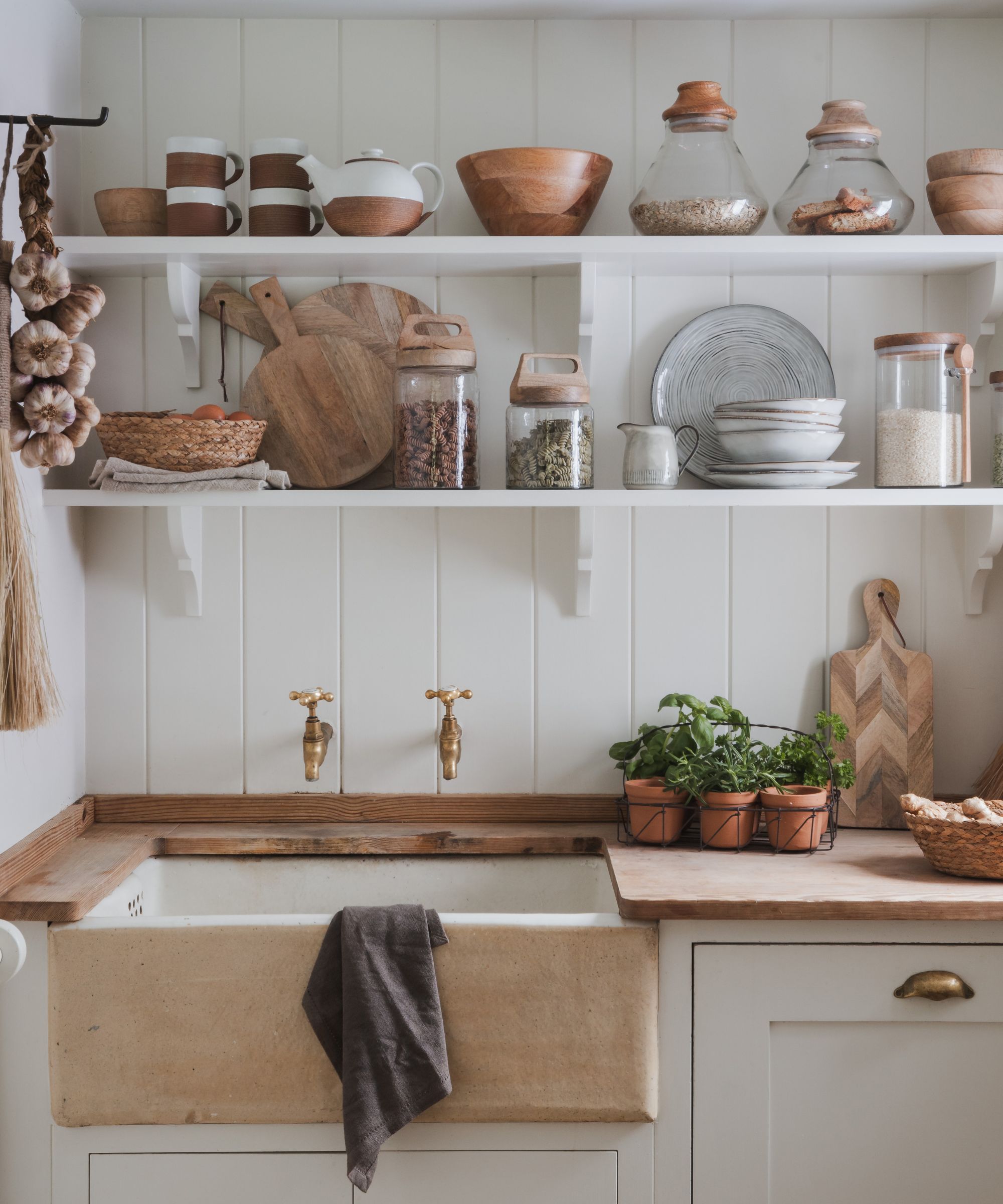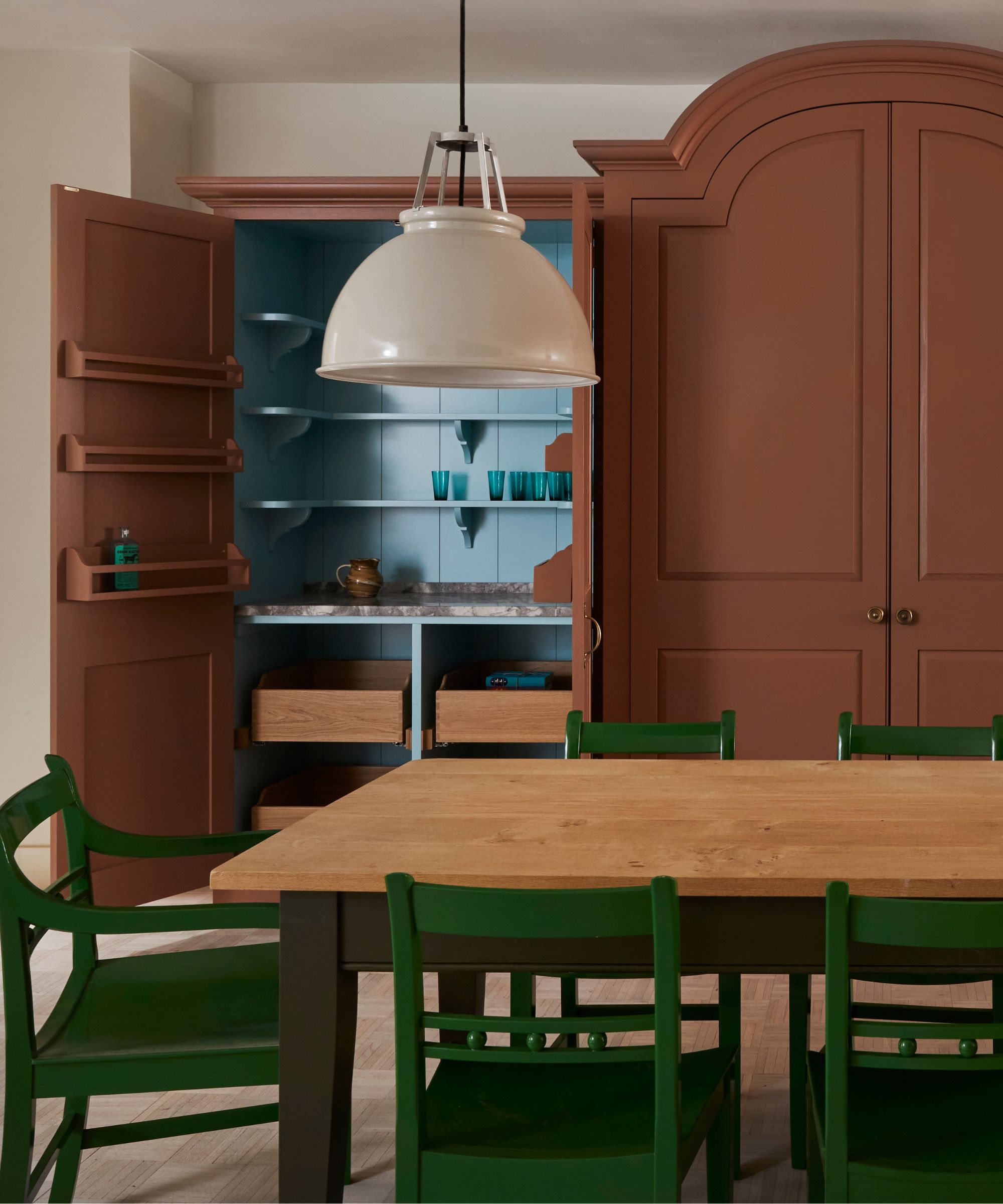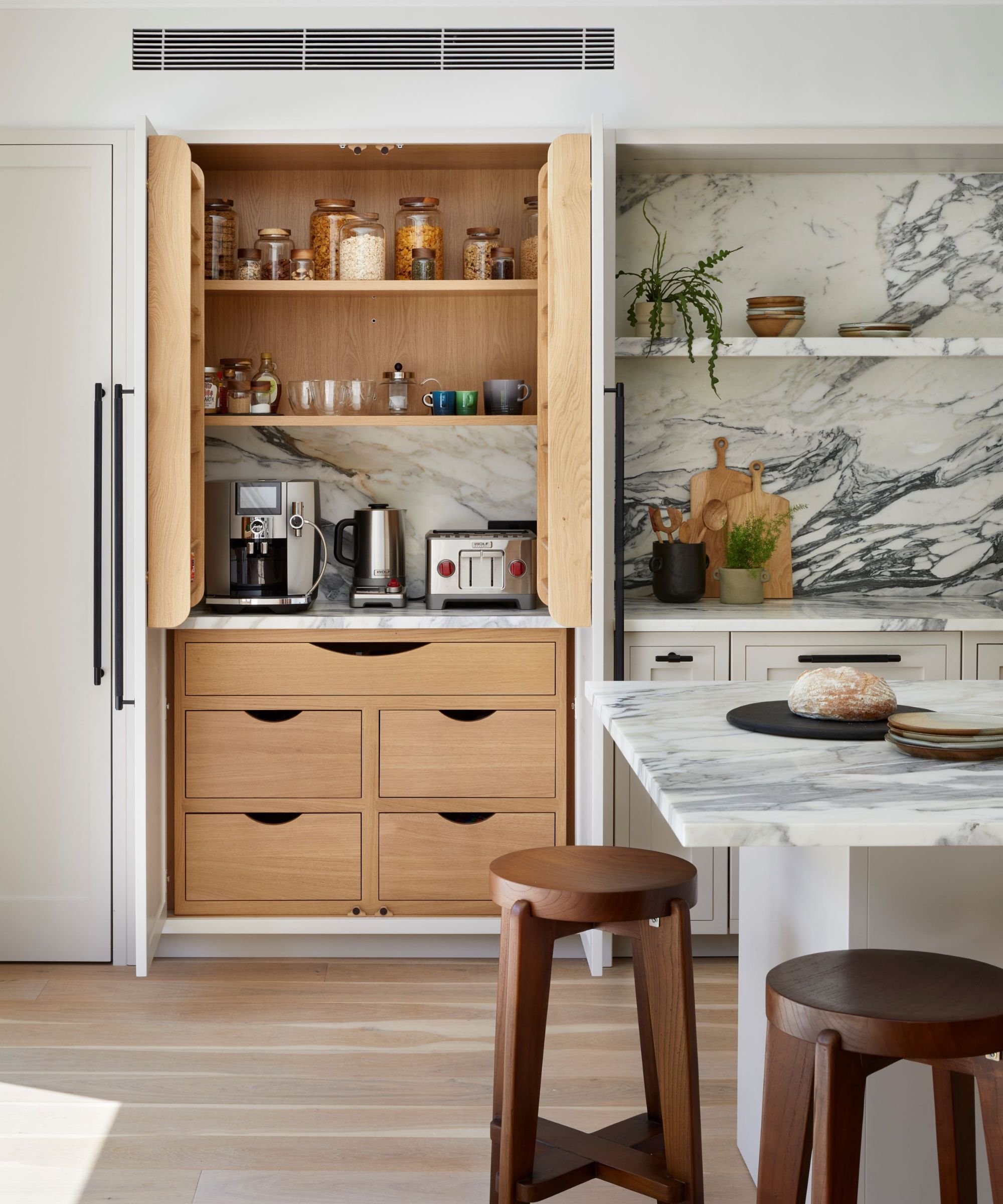
Pantries are like magnets to pests. With such a range of smells and foods drawing them in, it's important to implement some measures to keep them at bay so an infestation doesn't take over and render all your food inedible.
The rules are pretty much the same for most pests. Like getting rid of pantry moths, making your pantry an unattractive environment for them keeping on top of pantry storage, cleaning tips, and strategies for keeping them away from the treasure trove of snacks your pantry holds is key to keeping it pest-free.
Nothing undermines efforts to make your pantry look expensive more than the trails of pests or the pests themselves, so adopting preventive measures before any issues arise is the best way to go. This guide can help you understand common reasons pests are attracted to and get into your pantry and the techniques to deter them for good.
How to pest-proof your pantry
'Pantry pests – including Indian Meal Moths (IMM), Confused Flour Beetles, Saw-toothed grain beetles, to name just a few – can be a real challenge once an infestation is established,' says Joe Malinowski, vice president of pest management at Pest Authority. 'They will infest numerous products that are grain-based – rice, flour, cereal – and they love bird seed.' However, this doesn't mean these are the only things that attract pests and encourage them to stay. Spills, open food, and moisture are all risk factors for encouraging pests, which is why a pantry is such a vulnerable spot.
1. Vacuum seal food

One of the best things you can do to pest-proof your pantry is to keep your dry food in airtight containers. This reduces the potency of the smell that could attract pests, but it also makes your food inaccessible, giving pests no reason to stick around. Plus, this pantry storage idea can also help you stay better organized, so it’s a win-win.
Georgios Liakopoulos, pest exterminator at Fantastic Pest Control adds: 'Paper and cardboard are easy for larvae to chew through to get to other food, or to get into containers that aren't tightly sealed. If you are reusing old containers, make sure you clean them thoroughly.'
These smaller glass storage boxes are an eco-alternative for leftovers that keep food fresher for longer.
This set of seven glass food storage containers with bamboo lids is the perfect way to elegantly display your food items for convenient access.
If you need to go from storing food in the pantry to the fridge or freezer, these airtight silicone containers are the ideal choice.
2. Incorporate natural deterrents

Natural pest deterrents are a great addition to any pantry. Not only are they a non-toxic way to keep pests out, but they are also often items that belong in pantries anyway. For example, many of the smells ants hate will likely be a part of your indoor herb garden.
One of these pantry staples is bay leaves. Ina Ivanova explains: 'Pests avoid this herb because of its pungent and distasteful smell. You can place bay leaves in canisters and packages in your pantry or leaves can be sprinkled on shelves and inside cabinets or placed over countertops.' We recommend using this Earthborn one-gallon bucket of bay leaves from Amazon, for a long-term solution.
You can include other, more generalized methods to keep pests away like the best pests-repellent plants, homemade bug sprays, or coffee grounds to keep bugs away, or use tailored techniques for insects that are common in your area or those you have spotted in your pantry, such as vinegar to get rid of moths.
3. Keep trash out of the pantry

'If you have a walk-in pantry, don’t keep your kitchen garbage in there,' advises Brett Bennett, director of operations, PURCOR Pest Solutions. 'Pests are drawn to garbage bins often more so than the food left out in a kitchen, so by placing your garbage bin in your pantry, you effectively draw pests to that very area.
'Keep your garbage bin elsewhere, make sure it is sealed, and take it out daily.'
4. Ensure it is well sealed

As another layer of protection, after ensuring all food is sealed, you can reinforce your pantry by checking for any gaps and cracks pests might be entering through and sealing these. You can use caulk, weatherstripping, and expandable foam to do this.
5. Clean it regularly

Pests love leftover food in the pantry, so regularly clean your pantry shelves, sweep floors, and vacuum crevices to remove crumbs and residue, which attract pests. In addition to routine cleaning, clean up any spilled products immediately. When your cupboards are free of crumbs, and spills are immediately cleaned, pests can't get a free meal.
'You don't need to use harsh chemicals when cleaning,' says Georgios Liakopoulos. 'Not all over-the-counter pesticides are effective, and they can be harmful if mishandled or mixed improperly, especially around food. You can replace almost all chemical cleaners in your home with distilled white vinegar, either alone or mixed with water or other natural cleaners.'
Cleaning with vinegar is a great way to clean your pantry naturally, and it also contains acetic acid, which will disrupt the nervous system of many pests, leading to their deaths, so if they do get in, they won't be around for long.
6. Check groceries for pests

If you are noticing pests in your pantry but can't seem to work out how they are entering your home, pantry, or food storage containers, you may inadvertently be bringing them in with your groceries.
Always check your groceries and food deliveries for pests and thoroughly wash any items, such as fruit and herbs, before putting them in the pantry.
7. Rotate food

Pantry pests love decomposing organic matter, so part of pest-proofing is organizing a pantry with food storage ideas that can help you reduce food waste, meaning food gets used before it expires and becomes more enticing for pests.
'Some of the best measures a homeowner can take is to rotate products, especially if they keep a large number of products in their pantry,' recommends Joe Malinowski. 'Using older products first, keeping products in plastic containers with tight sealing lids and labels to keep an eye on the expiration date, and disposing of products they fear may be infested or out of date are all best practices for pest-proofing a pantry.'
When you fill this dispenser with new food at the top and access food from the base, you can ensure it does not expire or go stale. While this dispenser is for cereal, this technique can be applied to anything from fruit to rice.
For your pantry, this organizer rack can keep items labeled and accessible. This can dispenser is the perfect way to be consistent with your one-in, one-out rule, ensuring the oldest cans get used first.
Lazy susans can be labeled with the expiry date of items. This pantry organizer professionals always buy is a way you can access items with expiry dates that are sooner.
8. Maintain a dry environment

Pests thrive in moist environments. Ensuring your pantry stays dry can dissuade pest infestations. To do this you can use dehumidifiers or place silica gel packs from Amazon in areas where moisture is often present and wipe up any spills immediately.
'Once an infestation of various pantry pests becomes established, you will likely need to call in a professional pest management company to provide a thorough inspection of the entire home with a specific focus on the pantry area,' says Joe Malinowski.
Implementing pest-proofing measures to avoid a full-blown infestation will ultimately save you time, money, and stress.







